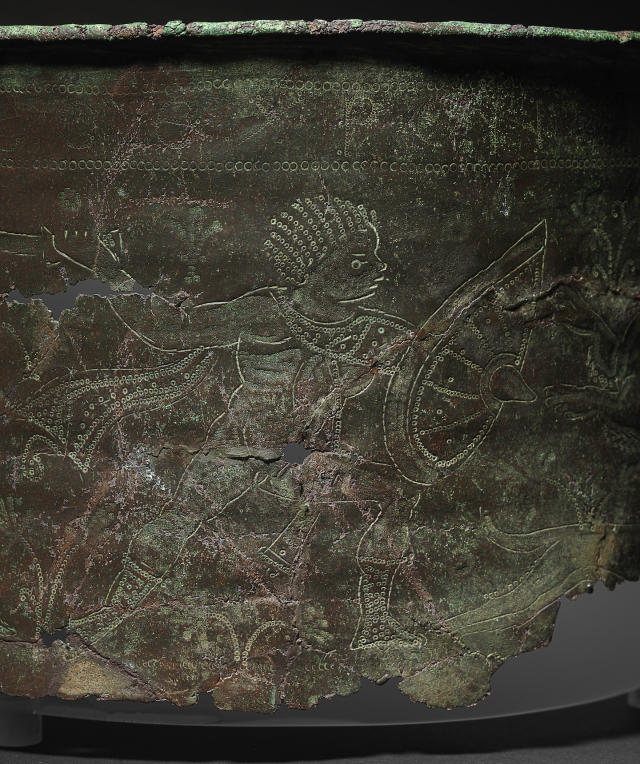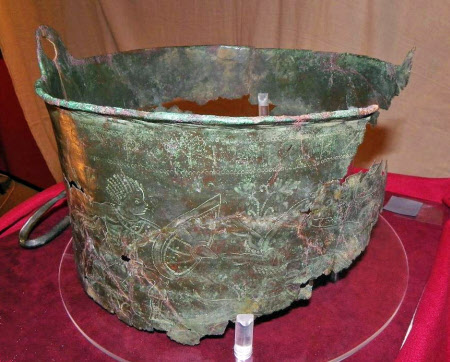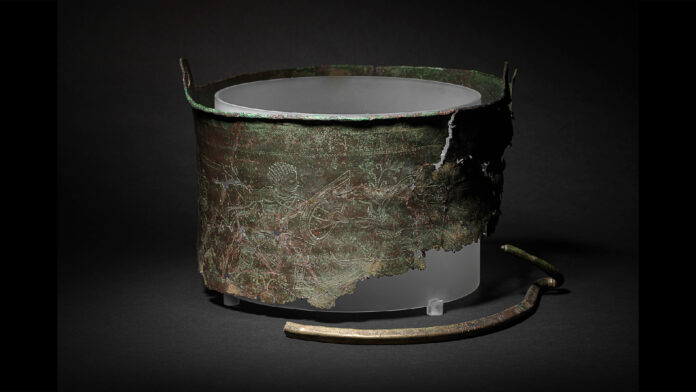Sutton Hoo, a significant archaeological site in England, known primarily for its seventh-century ship burial, has recently provided an intriguing glimpse into the past with the discovery of a Byzantine bucket, estimated to be 1,500 years old. This discovery enriches the collection of artifacts from the site and sheds light on the socio-economic conditions and international trade practices of early medieval times.

The Find: Byzantine Bucket Fragments at Sutton Hoo
During an excavation led by a combined team of archaeologists, conservators, and volunteers from Time Team, the U.K.’s National Trust, and FAS Heritage, fragments of a copper bucket from the Byzantine Empire were unearthed. The bucket predates the renowned ship burial by at least a century, providing a unique perspective on the material culture of that era. This remarkable find was made in late June, adding a significant piece to the historical puzzle of Sutton Hoo.

Historical Context and the Bromeswell Bucket
The fragments are believed to be part of the Bromeswell Bucket, an artifact found in 1986. This bucket featured a depiction of a North African hunting scene with lions and a dog, crafted in the sixth century in Antioch, Turkey, then a vibrant part of the Byzantine Empire. It also included a Greek inscription which translates to, “Use this in good health, Master Count, for many happy years,” suggesting that it might have been a diplomatic gift.

Authenticating the Discovery
To confirm the authenticity of these fragments, the team used X-ray fluorescence (XRF) analysis, a technique that helps in identifying the elemental composition of the metal. This analysis confirmed that the fragments belonged to the sixth-century Bromeswell Bucket. Further examination indicated that the bucket had undergone repairs in the past, possibly soldered back together, which speaks to its historical use and value.

The Broader Implications of the Discovery
The site of Sutton Hoo has been a hub of activity since at least 3000 B.C., with a rich history of trade and cultural exchange evident from the array of artifacts found, ranging from pagan and Christian relics to items from various parts of Europe and the Middle East. This new discovery not only enhances our understanding of these trade networks but also possibly links to the narrative of the Old English epic, Beowulf, which highlights the tradition of gift-giving among rulers of distant lands.
Conclusion: A Gateway to Medieval England’s Past
The uncovering of the Byzantine bucket fragments at Sutton Hoo marks a critical development in our exploration of early medieval England. This finding underscores the historical significance of Sutton Hoo and provides a deeper insight into the lives and international connections of the people from that era. Ongoing research and further studies are expected to continue shedding light on this rich historical tapestry.




